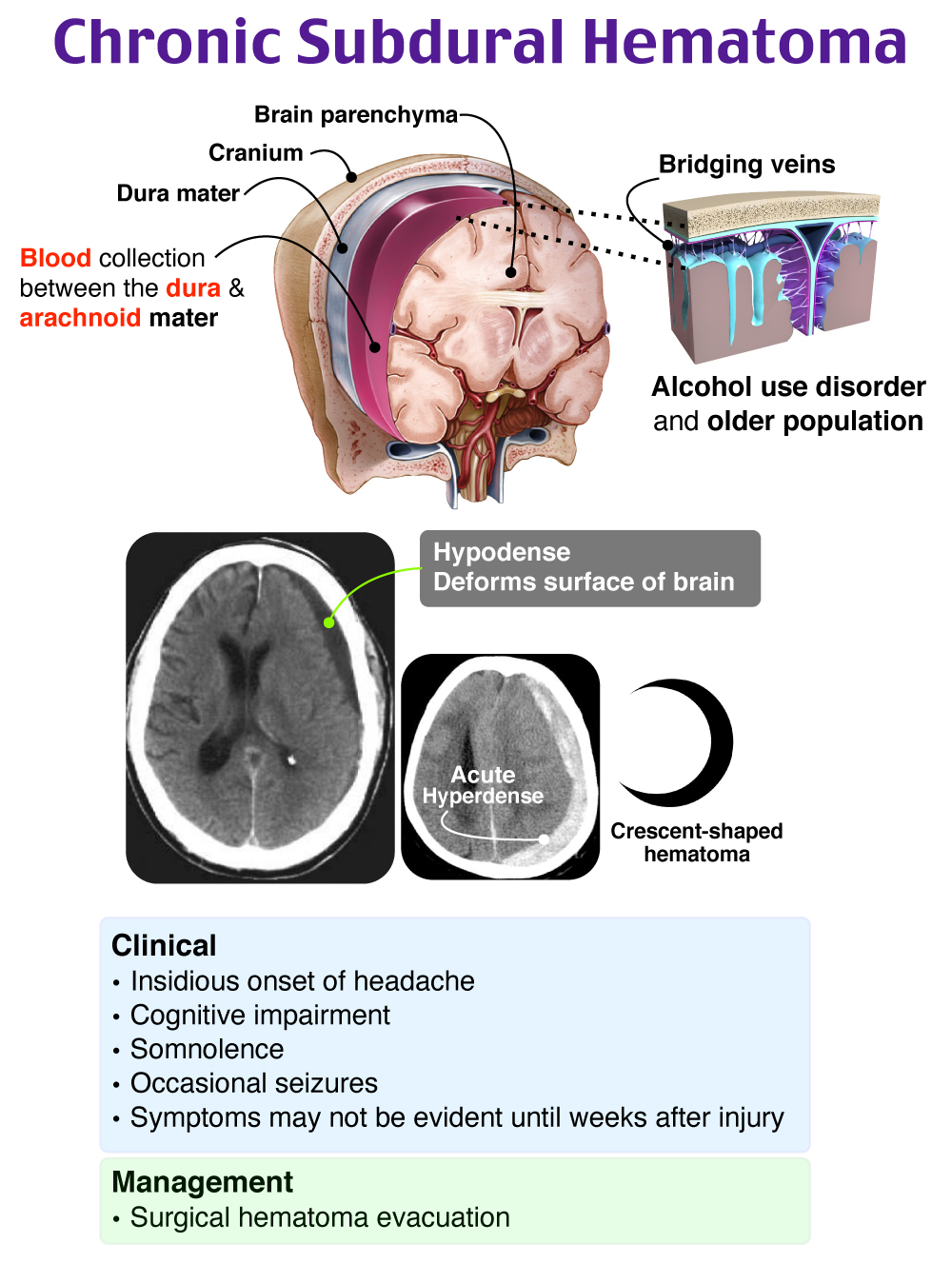Board-style questions created from the Frances Guide. Authored & peer-reviewed by Adult-Gerontology Acute Care NPs.
Each question is written to resemble the format and topics on the exam, meaning you won’t see any negatively phrased questions, no “all of the following except,” no “A and B”…you know what we mean. Most importantly, all questions include selective distractors (incorrect answer choices), which will help you think critically.
A 72-year-old woman presents to the intensive care unit with headache, lightheadedness, increasing confusion, and lethargy. Imaging reveals a chronic subdural hematoma with 11 mm clot thickness and minimal midline shift. Which of the following is the most appropriate next step?
Chronic subdural hematoma is a collection of blood on the surface of the brain below the dura. While more common in the older population, risk factors include alcohol use disorder, seizures, coagulopathies, cerebrospinal fluid shunts, and patients who are higher fall risks. While chronic subdural hematomas may start out as acute subdurals (such as with trauma from a head injury), the bleeding that leads to chronic formation is often secondary to small veins that slowly leak. Symptoms may be minor, such as headache, confusion,… Read More
Understanding why an answer choice is incorrect is just as important as knowing why one is correct. That’s why every Rosh Review question includes detailed explanations for the correct and incorrect answer choices. These comprehensive summaries link the most important components of a topic—from risk factors to diagnostics and treatment—giving you the context to build relationships between them.
Custom illustrations and tables help further clarify the core concepts. When information is presented visually, you can focus on meaning, easily reorganize and group similar ideas, and make better use of your memory.

Your personal analytics allow you to see your progress at all times, so you can create an efficient and effective learning strategy and stay on pace with your plan.
After each explanation is a straightforward question with a simple, memorizable answer that reinforces the corresponding topic.
Subdural Hematoma
These bulleted reviews focus on condensed, high-yield concepts about the main topic, from patient presentation to preferred management.
“I just received comfortably above passing score on the Initial Certification Exam! When I started using Rosh Review last year for the In-Service, my scores started rising considerably. Thanks again!”

Matthew DeAugustinis, MD
Attending Physician